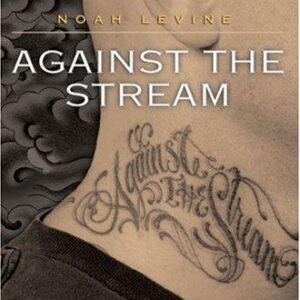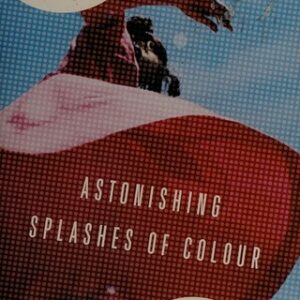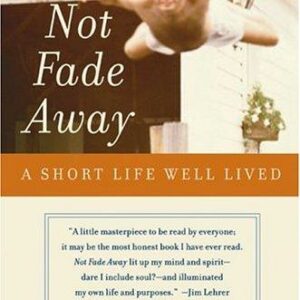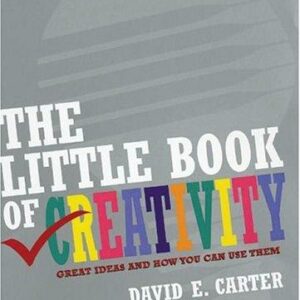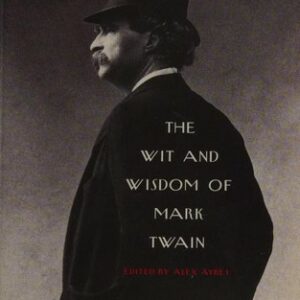The Lady and the Panda
$18.00
| Title | Range | Discount |
|---|---|---|
| Trade Discount | 5 + | 25% |
- Description
- Additional information
Description
Here is the astonishing true story of Ruth Harkness, the Manhattan bohemian socialite who, against all but impossible odds, trekked to Tibet in 1936 to capture the most mysterious animal of the day: a bear that had for countless centuries lived in secret in the labyrinth of lonely cold mountains. In The Lady and the Panda, Vicki Constantine Croke gives us the remarkable account of Ruth Harkness and her extraordinary journey, and restores Harkness to her rightful place along with Sacajawea, Nellie Bly, and Amelia Earhart as one of the great woman adventurers of all time.
Ruth was the toast of 1930s New York, a dress designer newly married to a wealthy adventurer, Bill Harkness. Just weeks after their wedding, however, Bill decamped for China in hopes of becoming the first Westerner to capture a giant panda–an expedition on which many had embarked and failed miserably. Bill was also to fail in his quest, dying horribly alone in China and leaving his widow heartbroken and adrift. And so Ruth made the fateful decision to adopt her husband’s dream as her own and set off on the adventure of a lifetime.
It was not easy. Indeed, everything was against Ruth Harkness. In decadent Shanghai, the exclusive fraternity of white male explorers patronized her, scorned her, and joked about her softness, her lack of experience and money. But Ruth ignored them, organizing, outfitting, and leading a bare-bones campaign into the majestic but treacherous hinterlands where China borders Tibet. As her partner she chose Quentin Young, a twenty-two-year-old Chinese explorer as unconventional as she was, who would join her in a romance as torrid as it was taboo.
Traveling across some of the toughest terrain in the world–nearly impenetrable bamboo forests, slick and perilous mountain slopes, and boulder-strewn passages–the team raced against a traitorous rival, and was constantly threatened by hordes of bandits and hostile natives. The voyage took months to complete and cost Ruth everything she had. But when, almost miraculously, she returned from her journey with a baby panda named Su Lin in her arms, the story became an international sensation and made the front pages of newspapers around the world. No animal in history had gotten such attention. And Ruth Harkness became a hero.
Drawing extensively on American and Chinese sources, including diaries, scores of interviews, and previously unseen intimate letters from Ruth Harkness, Vicki Constantine Croke has fashioned a captivating and richly textured narrative about a woman ahead of her time. Part Myrna Loy, part Jane Goodall, by turns wisecracking and poetic, practical and spiritual, Ruth Harkness is a trailblazing figure. And her story makes for an unforgettable, deeply moving adventure.Advance Praise for THE LADY AND THE PANDA
“A remarkable journey beautifully described, The Lady and the Panda brings to life one of the most astonishing and overlooked stories of American adventure, the 1936 quest by Ruth Harkness to bring a giant panda to America. Vicki Constantine Croke’s canvas is the mystical and wondrous China of the 1930s, her heroine a most remarkable woman, and her gift the ability to understand that this is a great love story.”
–ROBERT KURSON, author of Shadow Divers
“Mesmerizing. Vicki Croke has done a magnificent job of immersing the reader in an absolutely fascinating world. I found myself completely absorbed and could not stop reading. Amazing.”
–JEFFREY MOUSSAIEFF MASSON, author of When Elephants Weep
“Ruth Harkness, the New York socialite who journeyed into the wilds of China to bring the Giant Panda to America, now has the biography she deserves. In Croke’s hands, the intrepid American woman and the con men, dreamers, and adventurers who joined her in pursuit of the world’s most exotic animal spring vividly to life. Part Hemingway, part Treasure of Sierra Madre, The Panda Hunter is a rare blend of adventure, biography, and zoology. A deeply satisfying read.”
–STELLA DONG, author of ShanghaiVicki Constantine Croke has been exploring animal life for more than two decades—tracking the fossa in Madagascar, polar bears in the Arctic Circle, and Tasmanian devils in, of course, Tasmania. She now covers creatures great and small for WBUR-FM, Boston’s NPR news station, on air and as The Animalist online. Her work there earned a 2013 regional Edward R. Murrow Award. She is the author of The Lady and the Panda: The True Adventures of the First American Explorer to Bring Back China’s Most Exotic Animal, The Modern Ark: The Story of Zoos—Past, Present and Future, and Elephant Company: The Inspiring Story of an Unlikely Hero and the Animals Who Helped Him Save Lives in World War II. Croke has worked on nature documentaries for Disney and for the A&E channel and anchored The Secret Life of Animals on NECN-TV. She also wrote The Boston Globe’s “Animal Beat” column for for thirteen years, and has contributed to The New York Times, The Washington Post, The London Sunday Telegraph, Time, Popular Science, O: The Oprah Magazine, Gourmet, National Wildlife, and Discover magazine, among others. She lives in the Boston area.Chapter One
DEATH IN SHANGHAI
It was a bitter winter night, February 19, 1936, and on the outskirts of Shanghai, far from the neon and the wailing jazz, thirty-four-year-old William Harvest Harkness, Jr., lay in a private hospital, blood-stiffened silk sutures tracking across his pale abdomen. He was dying, and alone in his agony. His original expedition mates, four adventurous men with dreams of capturing the giant panda, had all deserted him long before. Though he knew people in the city from previous trips and more recent escapades in notorious nightclubs and bars, in the end he had stayed true to some deeper nature, pushing them all away and stealing off in secret. His family, including his young wife back in Manhattan, had no idea he was even sick. With what little strength he could summon, he had been writing sunny notes home that masked his horrible condition. Perhaps he really believed his own words, for just weeks earlier he had been pressuring the doctor to release him so he could get back to his campaign. But, finally, on this frigid night, scarred by other attempts to scalpel tumors from his neck and torso and wretched from his latest incision, he found himself unable to eat or drink, then even to breathe. The sportsman who lived to rough it in the wild died under starched white sheets, in a ward reeking of antiseptic. His young life had ended in the pursuit of the most mysterious animal of his time, yet he had never managed to set a laced boot in the great snow-covered mountains that separated China and Tibet.
A world away, back in the noise and lights and rush of Manhattan, it had been an even chillier winter, one of the snowiest and coldest anyone could remember. Late in the afternoon, on the very day her husband took his last breath, Ruth Harkness was making her way home from a salon where she had enjoyed a luxurious shampoo. Bundled up, she happily picked her way along icy sidewalks that were dusted with ash for traction and walled in by freshly shoveled snow. Friends were due for cocktails shortly, and in the larger scheme of things, she had even more to look forward to. Now that things were beginning to go well for Bill, she thought, he might just be home within months. Then the two of them could travel the world as they had always imagined.
But as she stepped inside her comfortable West Side apartment, before she had time to hang up her coat, her “pretty little mulatto maid” and her houseguest, Margaret Freeland, confronted her with the horrible news: Bill was dead. A cable message had been relayed by telephone.
Her first reaction was stunned disbelief. It was too awful to accept. This must be some fantasy of the press—reporters were fascinated by Bill and the other men of high adventure, but in their hunger for sensational stories, they were always getting things wrong. It had to be one of those false bulletins. Surely, over the course of the afternoon, that would become clear.
So she waited, as the winter darkness descended and lamps inside the apartment were snapped on. But hours later a telegram from Secretary of State Cordell Hull made it official. The love of her life was gone.
The devastation of that loss would consume her for weeks, and haunt her always. “Do you have that tremendous necessity of needing one person,” Ruth Harkness would ask a friend in the bruised aftermath of Bill’s death, “some person who understands you and trusts you completely in everything you do and you are—and ever can or will be? Someone with whom you can let down all barriers? All pretense of any kind and still be liked or loved? . . . That is what Bill meant to me and in return I gave him what he needed.”
Through their ten years together, few understood the singular nature of their bond. To the outside world, Ruth and Bill were opposites. But they were also as perfect a fit.
Both had arrived in Manhattan in their early twenties. It was the Jazz Age, when under the cover of darkness, whites began slipping into Harlem for the music. People spoke openly of birth control, and women were enticed by the makers of Chesterfield cigarettes to “blow some my way.” Josephine Baker had her own nightclub in Paris. Films turned talkie. Lindbergh crossed the Atlantic. D. H. Lawrence imagined a scandalous dalliance in Lady Chatterley’s Lover, and Margaret Mead was discussing sex among young Samoans. It was the birth of Time magazine, The New Yorker, and the Milky Way bar. For young party-minded Manhattanites during Prohibition, speakeasies were all the rage. It was no surprise, then, that the worlds of two hell-raisers would eventually collide.
Handsome, short, and slender, with slicked-back straw-colored hair and light blue eyes, William Harvest Harkness, Jr., was born to privilege. The sound of his name alone declared it. He was not a member of the famous Standard Oil Harknesses. But Bill had graduated from Harvard, class of 1924; he was a rich boy whose name showed up in the society pages, the son of a successful New York City attorney, and the scion of a wealthy New York family, as the press described him. The Harknesses were powerfully connected and accustomed to doors being opened for them.
But those points alone certainly would not have been enough to attract Ruth. Bill Harkness also had grit, and smarts, and a wry take on the world. Never arrogant, he was nonetheless sure of himself, and unconcerned with proving anything to others. His singular nature defied easy definition. As one friend pointed out, Bill had “inherited the wiry toughness of his Scotch-Irish ancestry along with a lot of mysticism, anomalously mixed with hard-headed Yankee shrewdness.”
Both bookish and athletic, cynical and sensitive, Bill Harkness was a man of appealing contradictions. His complicatedness was something that Ruth would love.
In Ruth, Bill saw a novel act. She was nothing like the girls he had met at Harvard dances. With her black hair parted in the middle and pulled severely back, a penchant for the dramatic, even exotic, in her dress, and a fondness for bright red lipstick, Ruth Elizabeth McCombs stood out. She was a newly minted dress designer who possessed a rare polish and poise. Speaking with a cultured lilt, she had a deep voice and a light wit. She could fill a room with her presence, her outsized personality invariably prompting people to say that she was tall, even though she stood only five feet four. She had, according to one society watcher, “that quality which Hollywood chooses to call glamour.” Over the years, her panache would carry her through lofty circles in New York City and beyond, bringing her top-notch invitations wherever she went. She appeared the ultimate city slicker but had started life as anything but.
Born on September 21, 1900, the third of four children, she came from hardworking, frugal stock in Titusville, Pennsylvania, with American roots going back to the eighteenth century. Her father, Robert, was a carpenter, lean, fit, and kind. Her mother, Mary Anne Patterson McCombs, was a bit bulky and more than a bit stern. A stay-at-home seamstress, she was as old-fashioned as the long skirts she wore. The McCombses lived comfortably, in a big brown two-story house that was more sturdy than fancy. It symbolized the McCombs way of life: solid and straightforward. The land, blessed by a nearby creek, dotted with fragrant apple trees, and able to accommodate a small kitchen garden, had been in the family for generations. Robert had been born on the very site where the big house now stood, in a log cabin, in 1872.
Though not poor, the McCombses were far from wealthy. And Titusville knew wealth—oil money, in fact. The nation’s first commercially productive oil well had been drilled there, propelling a few families into an elite circle. They wintered in warm places and sent their children to private school. Their mansions were huge and ornate. But in the small-town culture, rich mixed easily with poor, and Ruth gained an intimacy with affluence, forever finding herself both repelled by and attracted to the rarefied world of the rich.
No matter where she went in life, she would always carry with her a number of family traits. Chief among them were resolve and stoicism. The hardscrabble McCombses were people who picked themselves up and dusted themselves off. Honesty was the number-one commandment. The family strengths were timeless, but to Ruth, it could also seem that her parents were hopelessly mired in the last century.
Chafing at the crabbed environment at home, where liquor and religion were shunned in equal measure, she found refuge in books, which took her to the far corners of the world. But even the family’s temporary move to nearby Erie could not relieve the claustrophobia that she had begun to experience in Titusville. It was a pensive Ruth McCombs who looked out from the city’s 1918 high school yearbook. Her entry, unlike the chirpy and chummy ones of her fellow students, read, “Ruth is rather hard to get acquainted with, but after you know her you find that she has many good qualities and is a friend worth having.” If few people in northwest Pennsylvania really understood her, that was fine by Ruth. Like her older siblings, Jim and Helen, she planned to cut loose at the first possible opportunity.
After a semester at the University of Colorado and an experiment teaching English in Cuba, Ruth, with twenty-five dollars as her war chest, headed north to New York City.
Raven-haired and slim, Ruth Elizabeth McCombs was twenty-three years old when she first remade herself. Powdered and dressed up, she took on Manhattan, finding a job in fashion, where she could design and sew dresses for a population that bought up all the Paris knockoffs Seventh Avenue could produce. She took to her new life like a natural—utterly at ease at the center of a party, rarely seen without a smoke in one hand and a highball in the other. She became as quintessential a flapper as Clara Bow, one of the brassy, fun-loving girls in shimmering cocktail dresses who were, in the words of F. Scott Fitzgerald, “impudent” and “hard-berled,” who flouted convention and danced with abandon. Ruth said there were only two things in the world she hated: going to bed at night and getting up in the morning.
She might have been in great demand, but it wasn’t because she was pretty (she always said her face was not her fortune, and that it took an expensive photographer to bring out her best). She was so striking, though, that when she walked into a room, men noticed, and Bill Harkness was no exception.
It didn’t matter that she came from working folks in a small town, and he from big-city upper crusters. It meant nothing that she “had to work like the devil for a bare living,” and that he maintained his comfort without a thought to employment. He was intrigued.
Together, they knew how to enjoy themselves, to kick up their heels at naughty, high-toned soirées and low-down speakeasies alike. During the postwar era of sexual freedom, the two bohemians became a full-fledged couple. They were as good as married, without the traditional, stodgy sanctity of a wedding. Neither was a prude, and both loved physical pleasure. Ruth even joked about scandalous notions like being spanked on “a bare derriere.”
At the beginning of their courtship, they found themselves constantly tucked away in some corner, slugging back bootleg booze and lost in intense conversation. Addicted to reading, they soon began swapping books on their favorite subject—exotic travel. Their leather-bound volumes were filled with high adventure and glimpses of strange cultures. Often they contained delicate fold-out maps shaded in beautiful colors, veined with blue rivers and dappled by the shadowy wrinkles of mountain ranges. The most captivating among these atlases were the half-finished ones, those in which the dense, busy portions would end abruptly, leaving blank whole uncharted territories—regions of the world still steeped in mystery. Here were the places that had not given up their secrets to Western travelers and mapmakers. Sitting together in the haze of cigarette smoke, warmed by a glass of whiskey, their imaginations racing, Bill and Ruth always found themselves drawn to those patches of the unknown.
Bill had spent most of his short adulthood “on game trails in remote corners of the globe,” Ruth said, visiting India and China, Java, Borneo, and other islands of the Dutch East Indies. He thrived on the rough-and-tumble life in the field leavened by stints of footloose merriment in exotic cities. In long letters home, and then in intimate getting-reacquainted sessions on his return, he entranced Ruth with his tales of treks abroad.
His accounts, no doubt, were as gracefully told as the sagas the couple read together. For Bill was the romantically literary type with a classical education. He had passed college-entrance examinations in Latin, Greek, French, English, and ancient history. He described himself as an author and a man of letters and was an American intellectual in the mold of Teddy Roosevelt—the brave outdoorsman, as familiar with Milton as with a “Big Medicine” .405 rifle.
He and Ruth spent weekends at his family’s estate in Connecticut, and sometimes slipped off for tropical romantic getaways to places like the Virgin Islands. They drank and philosophized. “A dash of absinthe,” Ruth said, “and you analyze the hell out of everything.” They read books, walked on the beach, and poured their hearts out to each other.
And there was so much to talk about. Each of them was haunted by a penetrating, persistent loneliness, suffering bouts of it even in a crowded room. Yet they craved solitude. To Bill and to Ruth, being alone was a complex state: the satisfaction of solitude played against a chronic sense of loneliness.
As they settled into a life together, and even after they were married, their rather elastic relationship was marked by intimacy and long periods of separation. Paradoxically, they seemed to grow closer while apart. When traveling, Bill found he could be utterly open with Ruth. In addressing her, he wrote more easily, and with greater clarity, than when scribbling in a private journal. Her intuition, her understanding of his very nature, was so complete, that just placing her name at the top of the page, he said, drew him out. He was so certain of a mystical connection between them that he never worried about how they would keep in touch despite the vagaries of international mail service and the fluid nature of his itineraries. “He had a divine faith,” Ruth explained, “that I’d somehow know how to get letters to him and strangely enough I did.”
Her responses were encyclopedic. She couldn’t help “rambling”—telling him every detail of her activities and thoughts.
For Ruth, who would always feel that her family misunderstood her, there was, in this distant intimacy, a familiarity. She was accustomed to physical and emotional separations, and as Bill continued a life constantly on the campaign, his presence was a palpable part of her life.US
Additional information
| Weight | 11.6 oz |
|---|---|
| Dimensions | 0.8700 × 5.2300 × 7.9200 in |
| Imprint | |
| Format | |
| ISBN-13 | |
| ISBN-10 | |
| Author | |
| Audience | |
| BISAC | |
| Subjects | nature history, pandas, narrative nonfiction, tibet, explorers, nonfiction books, biography autobiography, historical biography, travel narrative, nature biography, TRV001000, Ruth Harkness, woman adventurer, giant panda, natural explorers, Quentin Young, nature expedition, wildlife expedition, historical travel narrative, historical adventure, travel, china, inspirational, nature, adventure, inspiration, biography, biographical, Animals, true story, history, non fiction, true stories, natural history, wildlife, biographies, NAT037000, bios, 1930s |



